The diagnosis has been made: your cat is diabetic. To help your cat, a suitable, balanced and above all quality diet will be essential. How to feed your diabetic cat properly? What diet should you favor and especially avoid? We tell you everything in this article.
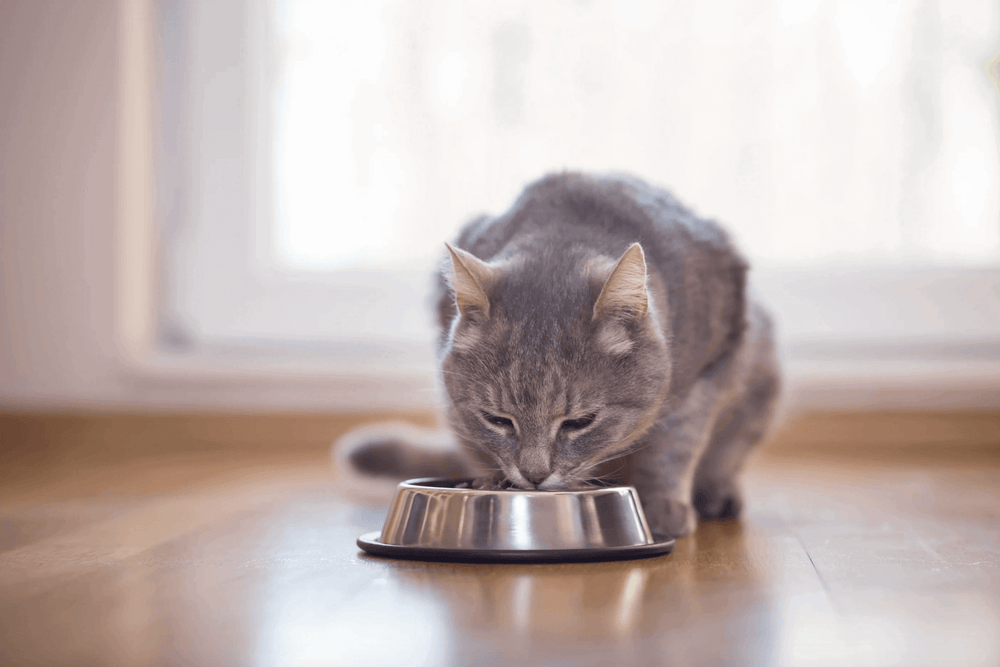
Diabetic cat: the importance of a suitable diet
Your cat drinks more water than usual, he goes to his litter box very often or pees outside, he loses weight while he eats with appetite, or even more than usual, his coat is no longer silky but dull. He lacks energy, walks with difficulty, a bit like a bear, he can no longer jump, he becomes plantigrade...
Alerted by one of these signs, you made an appointment with your veterinarian, and after careful urine and blood tests, it turned out that your little cat is diabetic.
Just like kidney failure in cats , diabetes is one of the most feared diseases in our cats . It is a particularly high risk in cases of overweight and obesity. This chronic pathology, also called “diabetes mellitus”, is characterized by a glucose level (blood sugar) that is too high in the blood. This chronic hyperglycemia is toxic to cells and leads to damage to various organs such as the pancreas, eyes, cardiovascular system and nervous system, if it is not treated in time.
Diabetes in cats is a very serious disease that requires special treatment: usually insulin injections once or twice a day, and a specific diet, very low in carbohydrates.
Of course, the treatment prescribed by the veterinarian will depend on your cat's diabetes.
A suitable diet can sometimes allow the disease to go into remission, meaning that insulin is no longer needed and can be stopped, and diet is sufficient to maintain normal blood sugar levels.
Please note: even if the diet is changed as soon as diabetes is diagnosed, it is necessary to go through a stage with insulin from the start to normalize blood sugar levels.
Causes of Diabetes in Cats
Sedentary lifestyle, overweight and obesity are the main factors that increase the risk of diabetes in cats. The causes of excess weight in cats can be linked to overfeeding, lack of physical activity, boredom, stress, sterilization or even taking certain medications.
Other causes also come into play: a genetic predisposition - certain breeds are more susceptible to diabetes such as the Burmese and the Norwegian - long-term drug treatments such as those based on corticosteroids.
If your cat is neutered and sedentary (without access to the outdoors), and even if it is not overweight, offering it a mainly dry diet (when kibble represents more than 75% of the diet in calories) is also a risk factor for later diabetes.
Adapting your diabetic cat's diet is essential. A specific diet, adapted for diabetic cats, will help regulate blood sugar, keep your cat at a "normal" weight and limit the risks of diabetes complications.
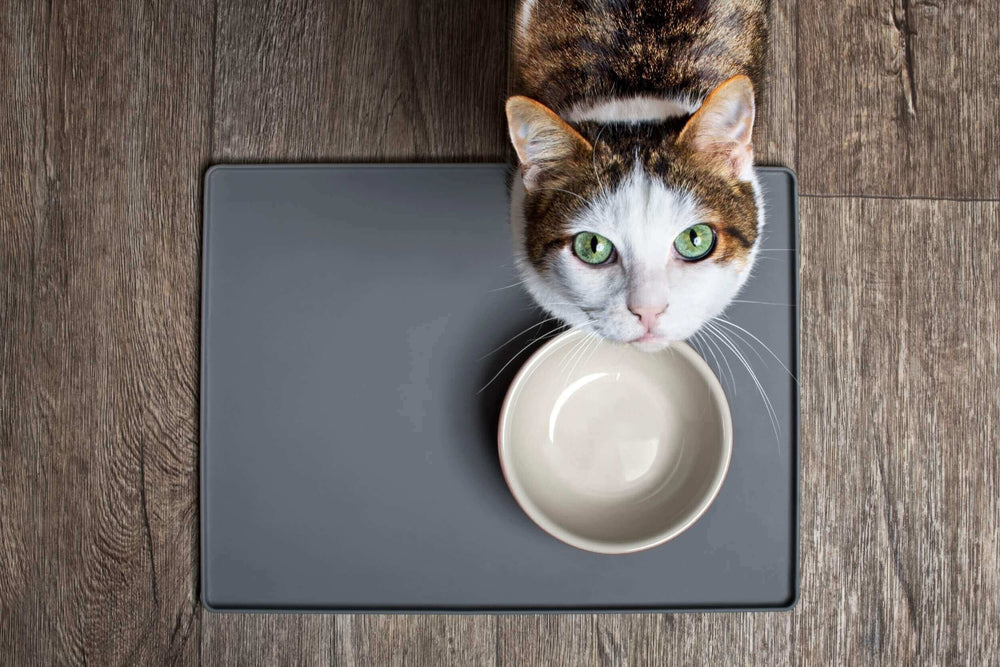
What diet for your diabetic cat?
Adapting your diabetic cat's diet is essential. A specific, low-carbohydrate diet, adapted for diabetic cats, will help regulate blood sugar levels, keep your cat at an optimal weight, with the overall goal of limiting the risks of diabetes complications.
A low-carb diet
Glucose is a carbohydrate, a circulating sugar that is physiologically essential in all mammals. All cells in the body require glucose as an energy source. The brain, red blood cells, and eyes, for example, have significant requirements for glucose as an energy source. It is therefore essential for the body to maintain a glucose supply to nourish these tissues. It is also necessary for the synthesis of non-essential amino acids, glycoproteins, and vitamin C.
Glucose can enter the bloodstream after consumption and digestion of sugars (lactose, sucrose, etc.) and complex carbohydrates (maltodextrins, starch). Glucose in cells is also made from certain amino acids.
In cats, carbohydrates are not essential nutrients : they do not need to be present in the diet. In fact, not only is the cat capable of synthesizing glucose from amino acids**, but it does so systematically**, like all strict carnivores. Gluconeogenesis is a natural process in cats!
Small amounts of glucose and glycogen are present in all animal tissues (all animals need glucose in their blood and cells!), as in the cat's natural prey (mice, birds, etc.). We also find a little more or less complex carbohydrates in all plant foods, which is not a problem, since we are talking about 2 to 5% of carbohydrates on dry matter.
In industrial foods, the quantities are clearly different; between 10 to 50% in pâtés and 20 to 50% in kibbles.
Our Ziggy pâtés contain less than 3% carbohydrates / dry matter. Ziggy Vet Diabetes pâté contains less than 1% sugars and starch / dry matter.
Why so many carbohydrates in cat food?
Why so many carbohydrates? As explained in our article on diabetes in cats, animal proteins are rarer and more expensive. Manufacturers then compensate with a carbohydrate intake. In addition, a minimum quantity (around 10-15%) is essential for the extrusion process in the manufacture of kibble. Even in non-industrial kibble, we find some. The same goes for “cereal-free” kibble. A kibble without starch does not exist (at least not yet).
For your diabetic cat, it is advisable to reduce kibble, or even avoid it. Instead, opt for a pâté that is low in carbohydrates , and if possible, rich in muscle animal proteins.
A diet rich in animal proteins… of quality!
Quantity does not mean quality.
Some pâtés may indeed have a high protein content, but these are not always qualitative. They do not contain muscle but reconstituted meat (mixture of vegetable and animal protein) or mixtures of pieces of poor quality, with a lot of collagen, without much nutritional interest.
Hydroxyproline can be measured, a component present only in collagen (indicating animal protein but no muscle). In cartilage, bone and carcass, the hydroxyproline/protein ratio is high. In Ziggy pâtés, the protein sources are animal, and there is less than 2% hydroxyproline/protein.
In feline nutrition, we also base ourselves on the protein/phosphorus ratio of a food which provides an indication of the quality of the proteins used. Quality protein sources have a very high protein/phosphorus ratio, which means a lot of protein for little phosphorus. Quality proteins include fish, meat, eggs and offal (muscle, liver, and to a lesser extent kidney, lobe). Cereals, carcasses and bones, on the other hand, have a low protein/phosphorus ratio.
To learn more, please read our article on proteins in your cat's diet.
Ziggy VET Diabetes Pate Review
Is Ziggy cat food suitable for diabetic cats?
As mentioned above, kibble necessarily contains starch and therefore provides carbohydrates to your cat, even if it is formulated for diabetic cats. It is of course possible to offer kibble to your feline, as long as this contribution is a minority in its daily ration. Our Ziggy cat kibble is not specifically formulated for cats suffering from diabetes, but it is formulated with high-quality proteins and is low in carbohydrates (-24%).
How much pâté and/or kibble should I give my diabetic cat?
The amount of food to give your cat depends on several factors: its physical activity (indoor or outdoor cat), its age, the type of food you offer it (only pâté or a mixed diet), its state of health, but also and above all its optimal weight.
To know the exact quantity to offer your mustachioed man, we offer a personalized ration calculator on our site.
How many meals per day for a cat with diabetes?
Whether they are sick or not, all our cats must have at least 4 meals during the day . And this for 3 reasons:
- For their overall health. It is necessary to limit the daily quantity to its strict need to avoid the risks of overweight and obesity.
- For their urinary health. Splitting up your meals promotes good urinary health. After a meal, urine tends to become more alkaline. This is due to urinary compensation for the loss of gastric acids secreted during digestion. The larger the meal, the more alkalinization increases, thus promoting the formation of urinary crystals.
- For their mental health. Remember that our cats are small nibblers. In nature, they hunt and consume an average of 16 small meals per day. If your cat only eats 2 times a day, he could feel frustrated
What foods should my diabetic cat avoid?
There are several foods that should be avoided for your cat suffering from diabetes: starchy foods and foods in general, sweet vegetables, rice, pasta, corn, potatoes or even cakes and ready-made biscuit treats (even if this is the guilty pleasure of some of our cats).
How can I please my diabetic cat?
If you want to please your cat, it is possible to give him a small treat, in limited quantity however so as not to unbalance his ration. You can give an olive (without a pit!), a peeled shrimp tail or small cubes of zucchini if he likes it. Even between meals. We tell you everything in our article: 5 healthy treats for my cat.
Dietary changes and diabetes monitoring
Giving your diabetic cat the right food is essential to its health. But be careful not to make too abrupt a change. Even when sick, your companion needs to go through a food transition phase. A rapid change of food could cause diarrhea and vomiting. He could also develop a permanent rejection of his new food if ingestion is associated with a negative experience (physical or emotional). This refusal could worsen his condition and cause, not hyperglycemia, but on the contrary hypoglycemia.
In case of diabetes, a change of diet must also be associated with monitoring of blood sugar levels one week after stabilization of the new diet . The composition of the food influences the amount of glucose that enters the blood. The diet of the diabetic cat must therefore be as stable as possible, and monitored as much as the blood sugar.
My diabetic cat refuses to eat, what should I do?
It is essential to accompany each change of food with a slow transition: if it takes 3 weeks for your cat to accept this change, it is not serious.
However, if your diabetic cat refuses to eat despite all your attempts (giving its usual food, changing the arrangement of its bowl, adding a little meat juice or tuna to its meal), do not wait. Hypoglycemia can put your cat's life in danger. Contact your veterinarian immediately!
Diabetes is a disease that should not be taken lightly. Regular appointments with your veterinarian will be necessary to monitor the progress of your beloved little cat's disease.


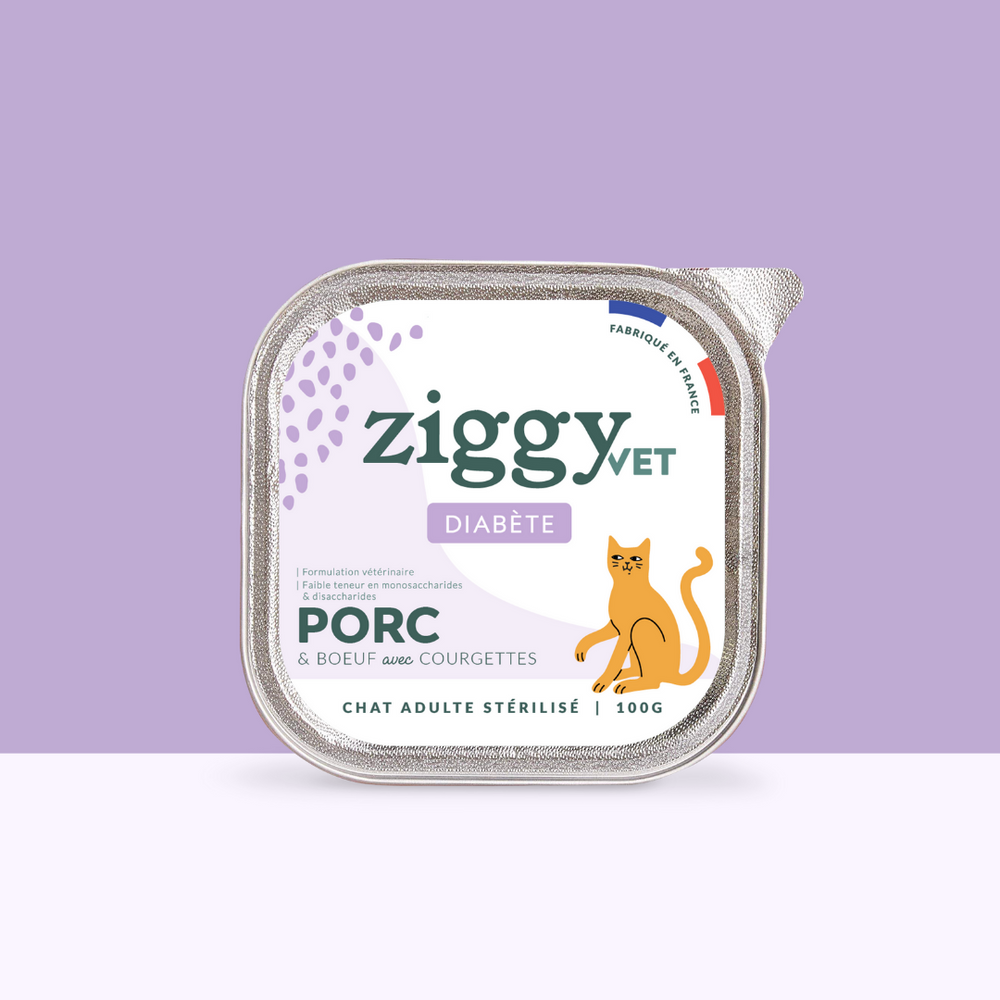
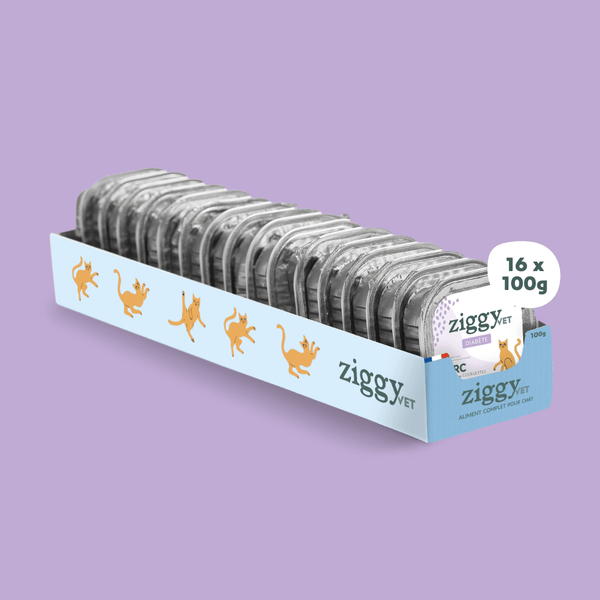

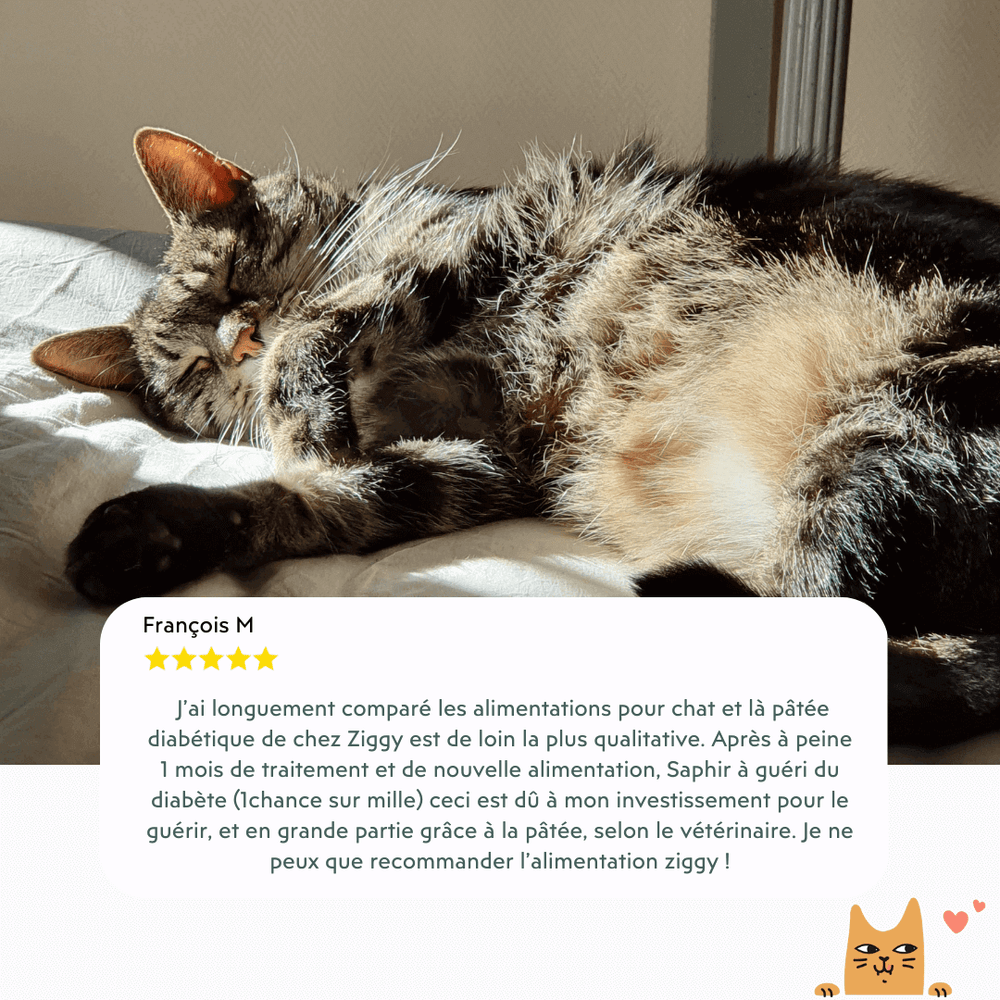
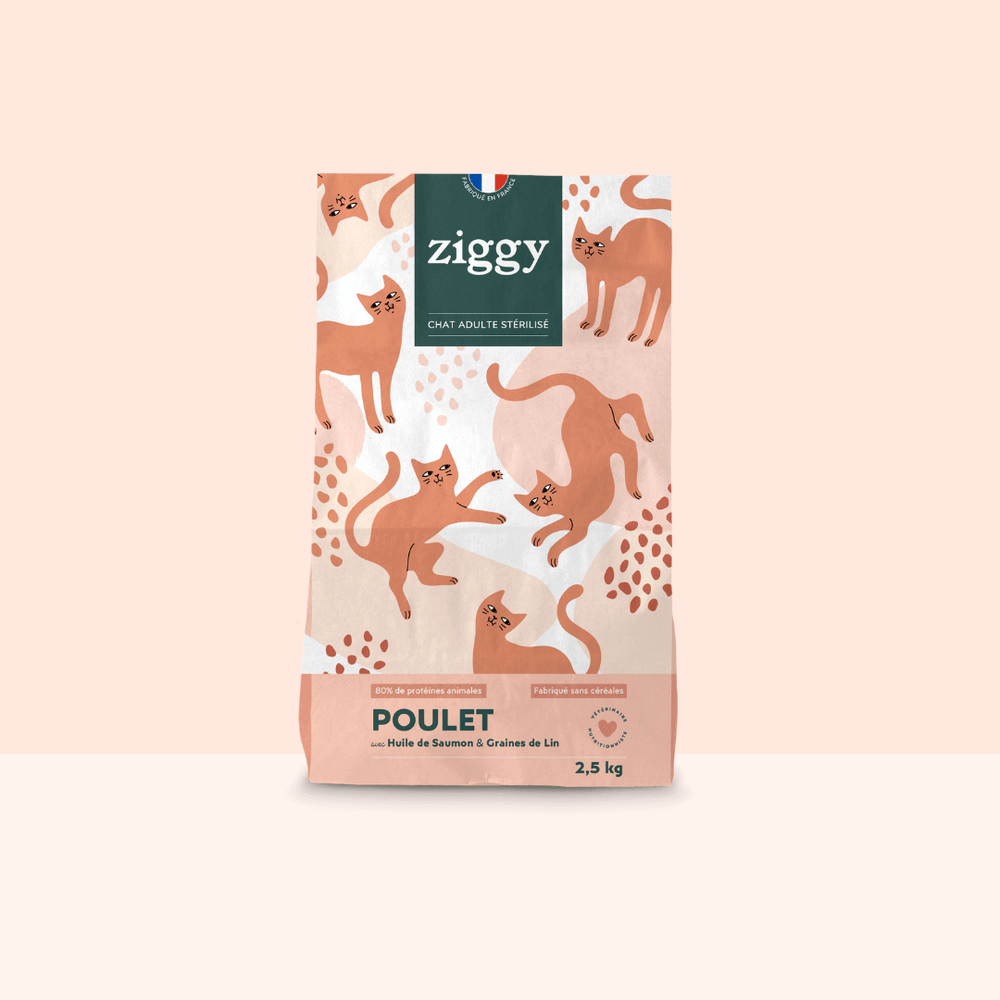
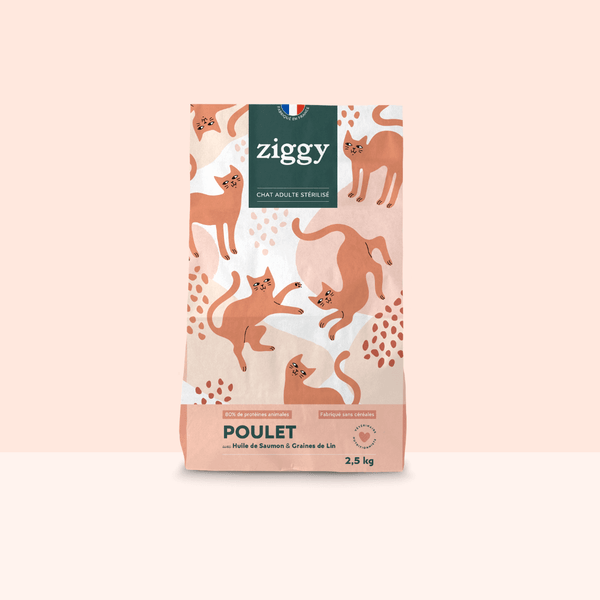

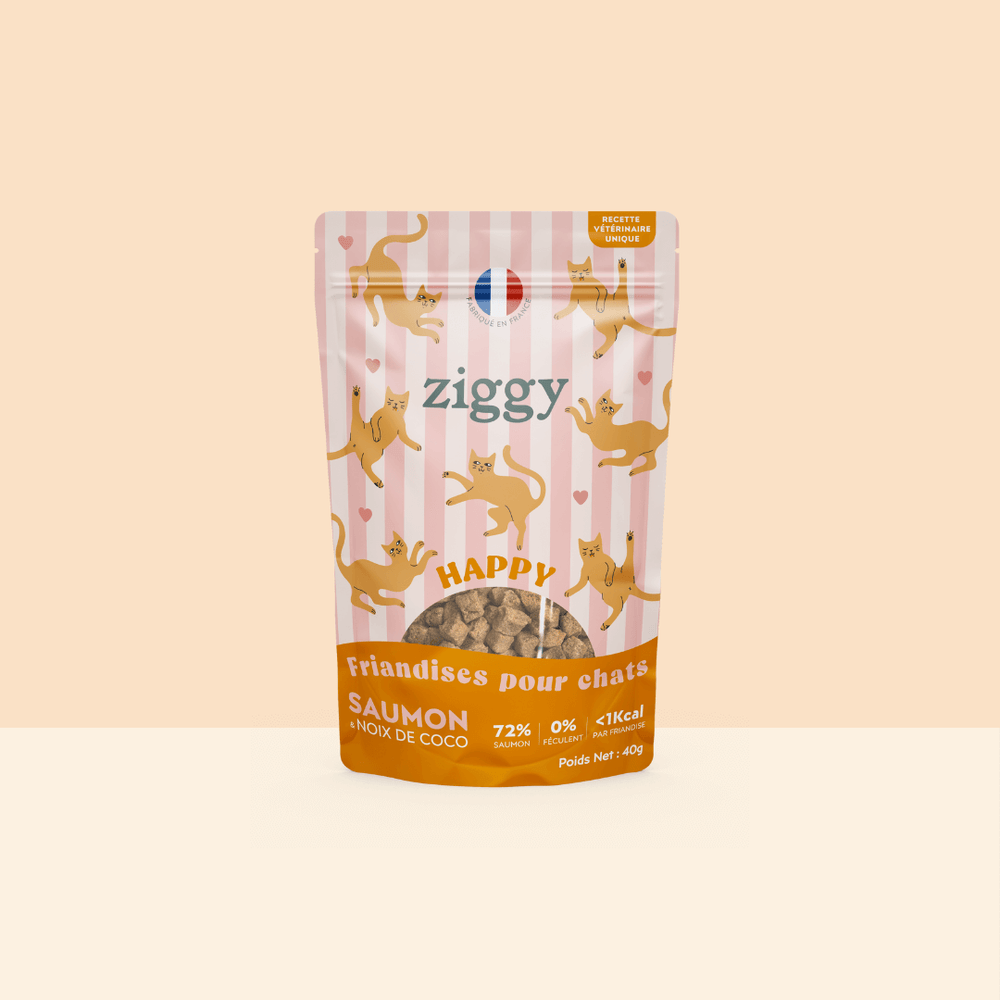
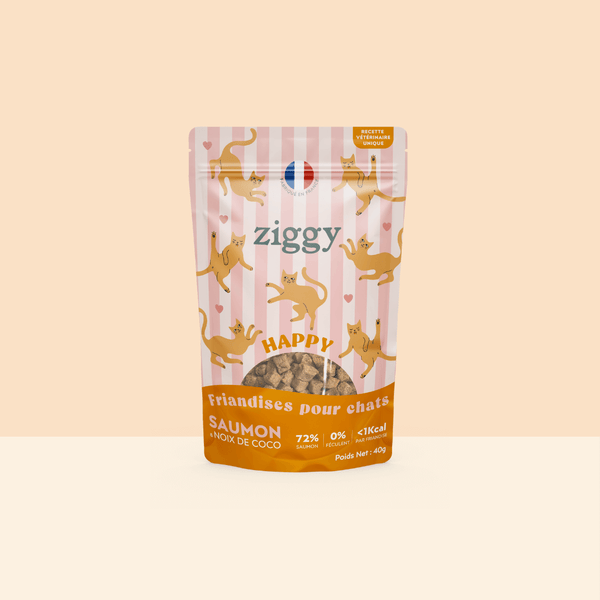
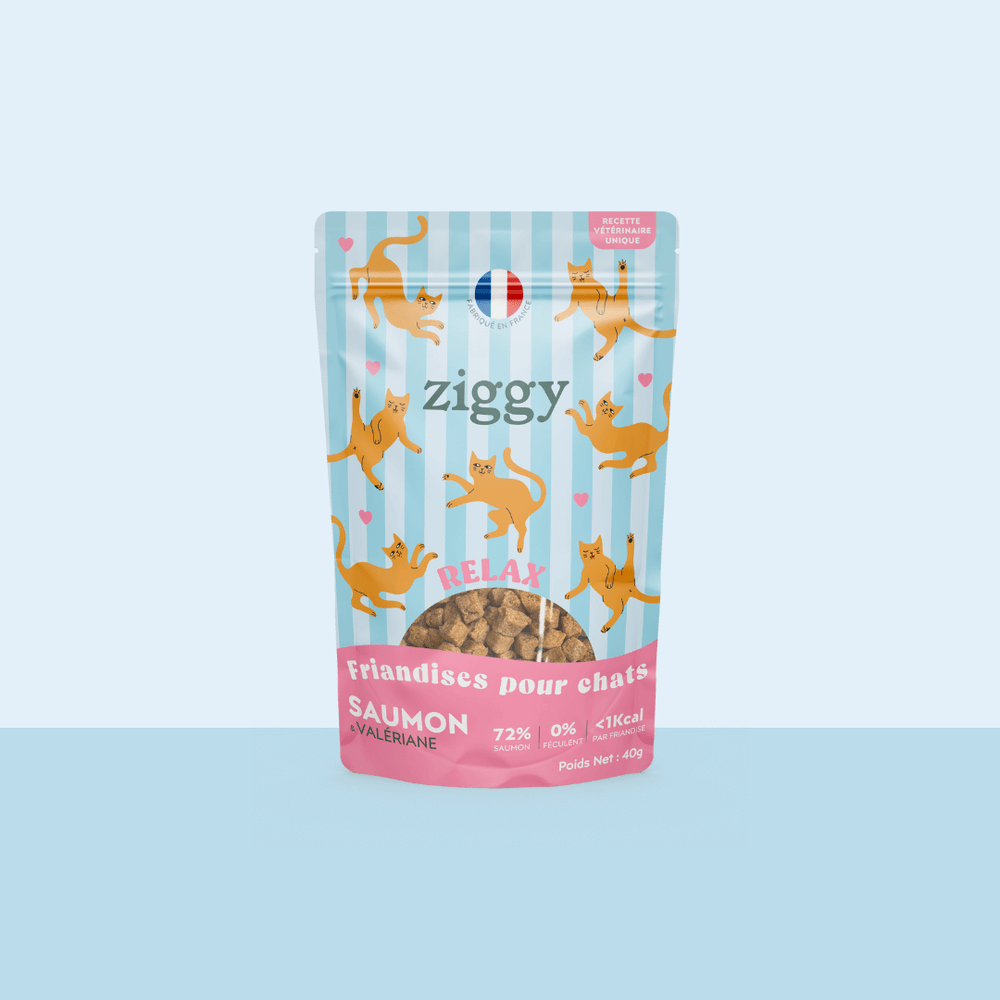
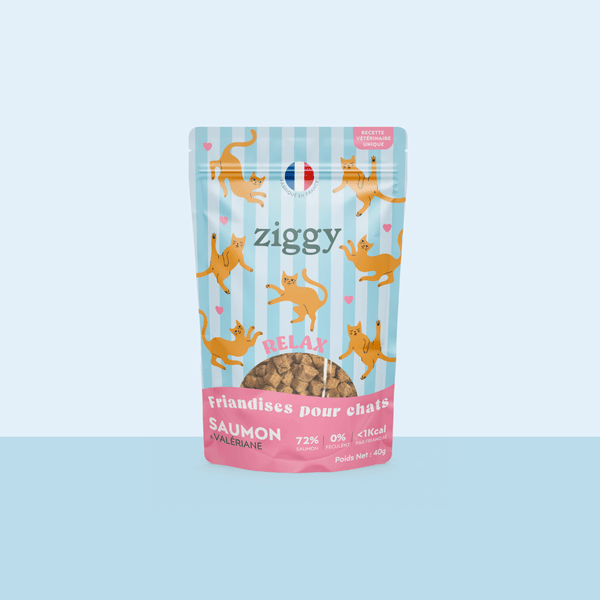
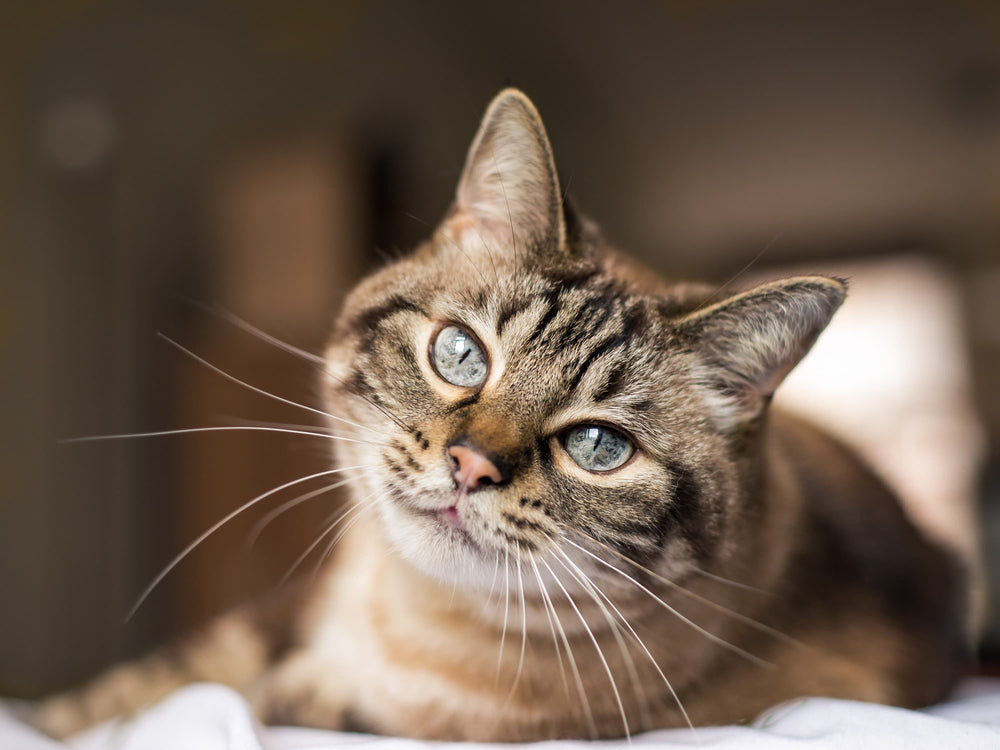
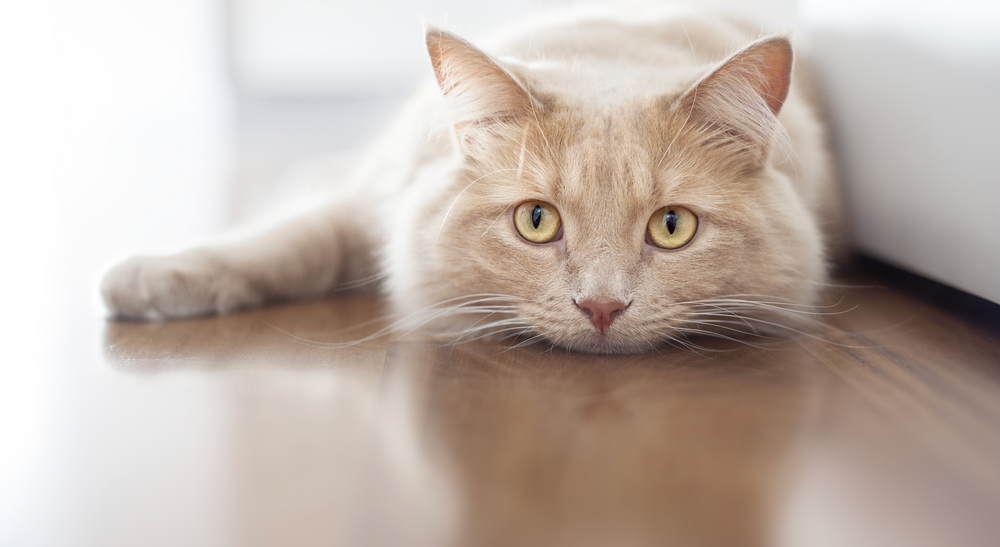
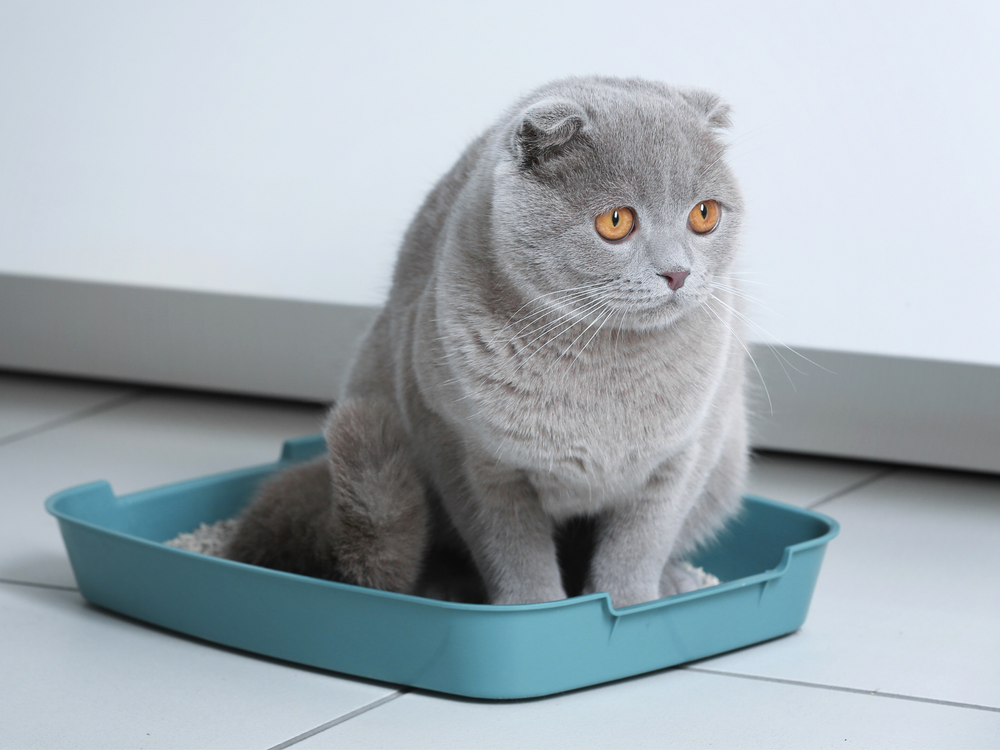
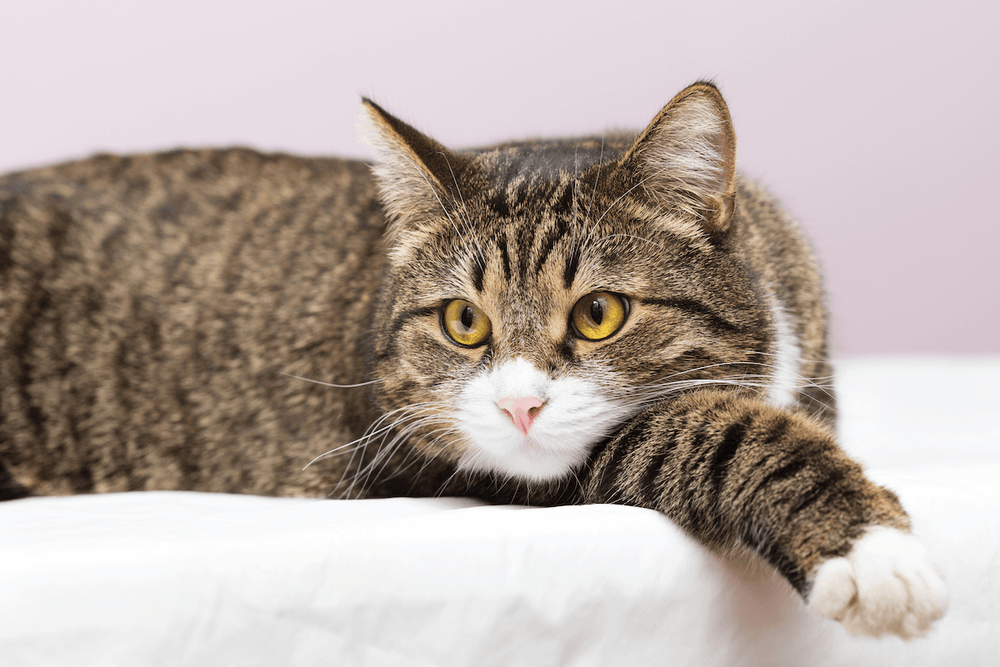
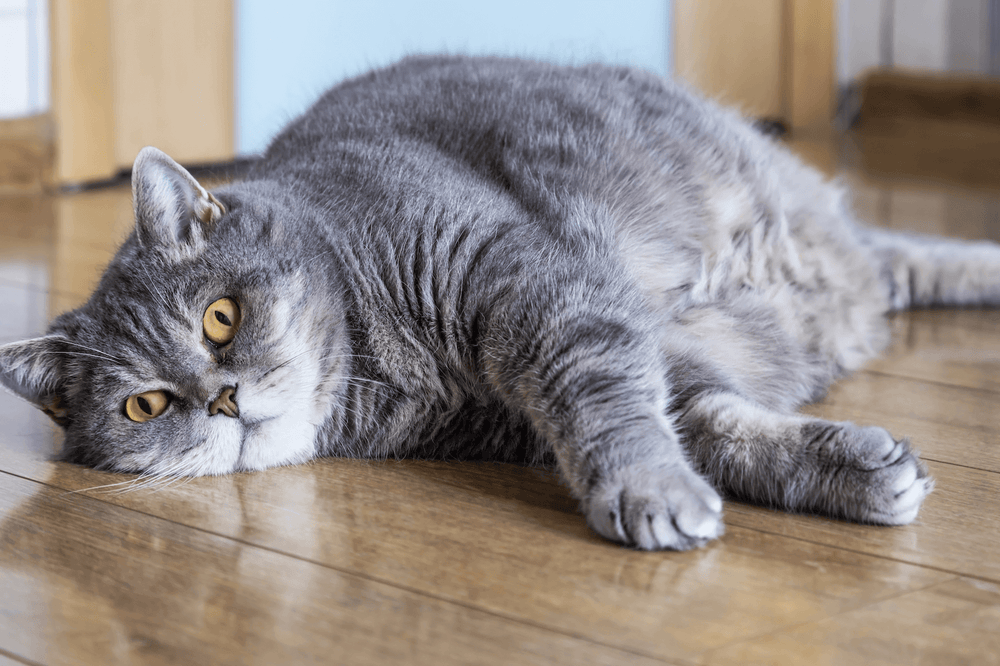
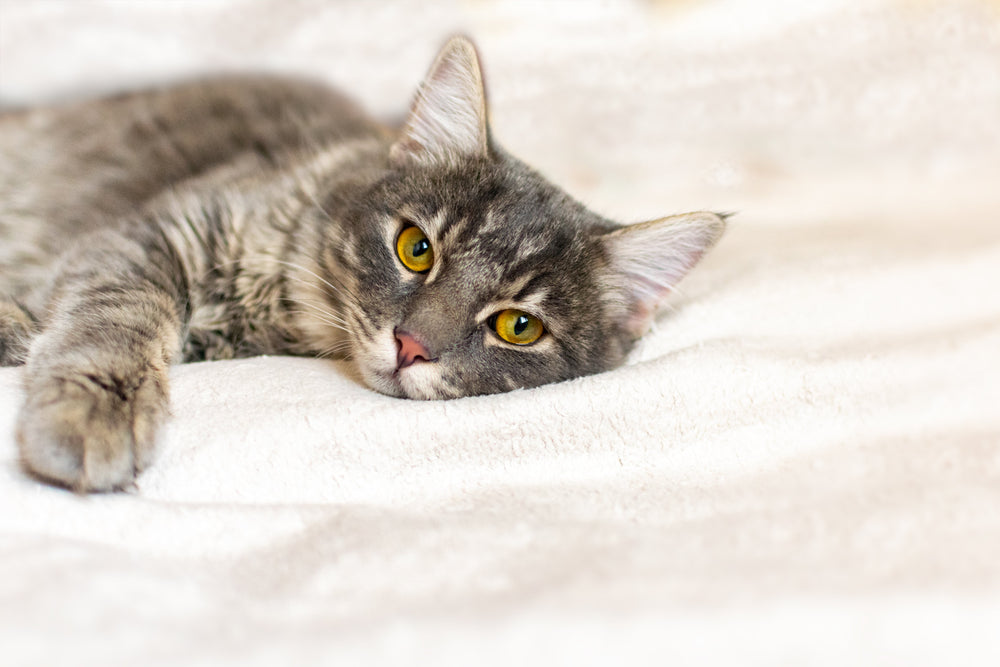
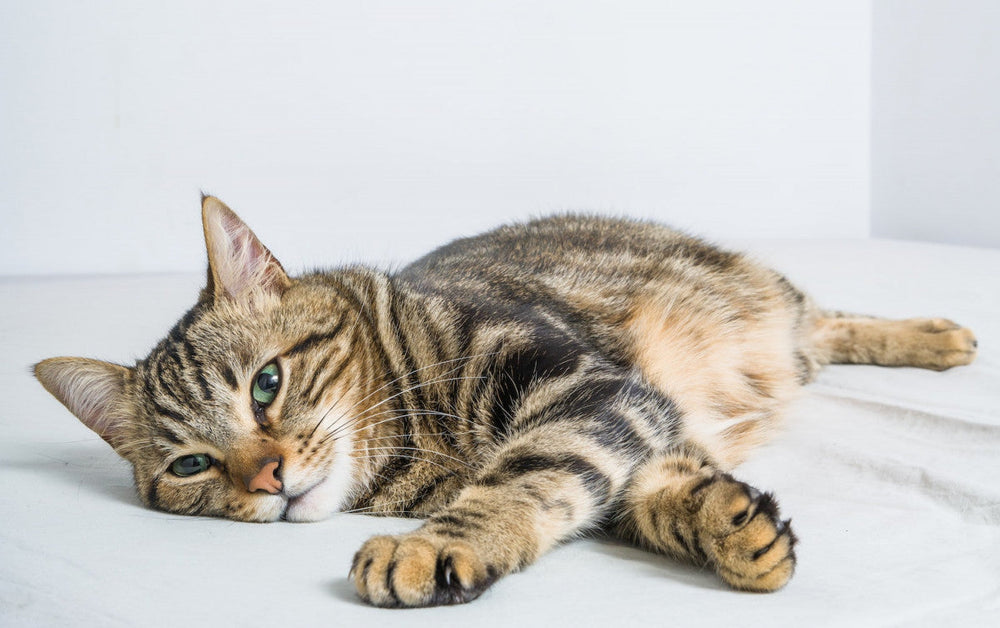


Bonjour,
Merci beaucoup pour votre commentaire. 💛
Nos pâtées pour chats diabétiques sont complètes. Vous pouvez tout à fait donner à votre moustachu uniquement nos pâtées. C’est ce que nous recommandons d’ailleurs à tous les moustachus souffrant de diabète, car contrairement aux croquettes, nos pâtées pour chats diabétiques sont très pauvres en glucides et surtout sans amidon. Nos croquettes contiennent moins de 24% de glucides, mais pour votre petit loulou, nous ne pouvons que vous conseiller de lui offrir une alimentation 100% humide et spécifiquement formulée pour sa pathologie.
N’hésitez pas à nous contacter directement par email à hello@ziggyfamily.com si besoin. Nous sommes à votre disposition pour vous aider et répondre à toutes vos questions. 💕
L’équipe Ziggy.
Bonjour,
Je vous contacte suite à une demande d informations concernant les terrines pour chats diabétiques..
Je souhaite savoir si cette alimentation seule suffit sans apport de croquettes ?
faites vous des croquettes pour chats sans trop de glucide Cela serait pour faire un accompagnement aux terrines svp
Merci pour votre retour
Bien Cordialement
Bonjour
Je suis au Québec, mon chat a le diabète et réagis très mal au poulet. Malheureusement, c’est seulement la sorte que nous avons dans tout les vétérinaires pour le diabète. En plus, ragoût ou pâtée, elle ne veux pas manger. Je lui ai acheter des pâtes aux poissons, tassez-vous de la, elle a faim. Pourrions-nous ce communiquer pour connaître les raisons ou autre à transporter de la nourriture autre que poulet pour les animaux diabétiques, svp
Bonjour,
Quelle alimentation recommandez vous pour un chat qui n’est pas diabétique mais qui a eu une pancréatite ?
merci
Bonjour David,
Merci pour votre commentaire 💛
Un chat diabétique a besoin d’une alimentation saine, peu calorique, et surtout sans céréales et sans amidon afin de limiter au maximum l’apport en glucides.
Toutes nos pâtées rassemblent ces caractéristiques. 😺
Pour le moment, nous ne proposons qu’une seule recette de pâtée spécifiquement formulée pour les chats diabétiques.
Cette recette unique a été formulée par le Dr Vet G. BLANCHARD et assure ainsi un équilibre nutritionnel tout en respectant les besoins spécifiques d’un chat diabétique.
Si vous souhaitez varier un peu les saveurs, vous pouvez tout à fait alterner avec nos autres recettes de pâtée pour chat adulte stérilisé car toutes nos pâtées sont saines, qualitatives et sans amidon.
On reste entièrement disponible si vous avez la moindre question,
L’équipe Ziggy 😻
Bonjour, vous ne proposez, pour un chat diabétique, que des patés humides au porc… dommage j’ aurai aimé changer un peu de “gout”.
Leave a comment